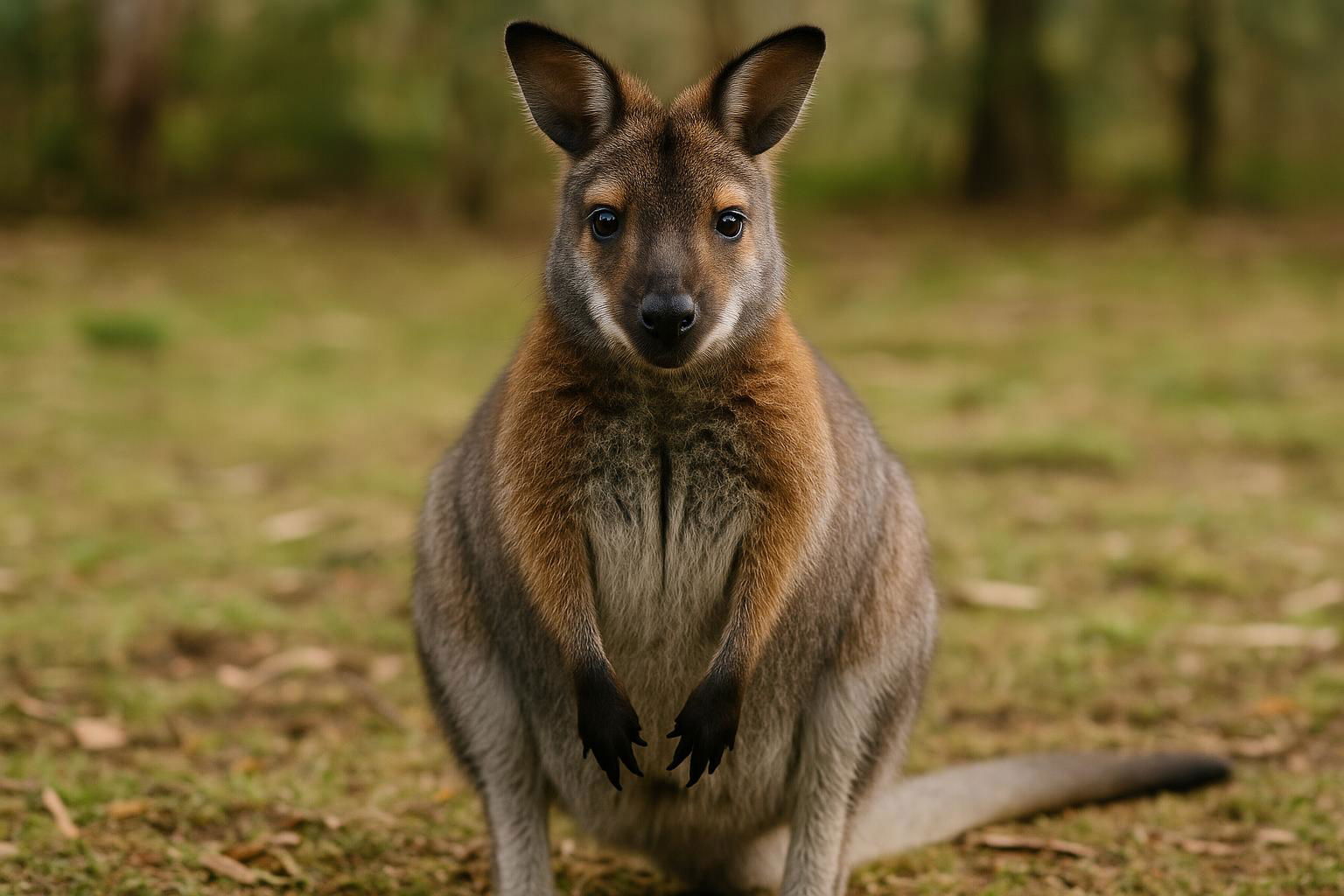
Bennett's Wallaby
Macropus rufogriseus
Bennett's Wallaby, scientifically known as Macropus rufogriseus, is a medium-sized marsupial native to the eastern and southeastern regions of Australia, including Tasmania. This species is characterized by its thick, soft fur, predominantly gray with a hint of reddish-brown, which becomes more prominent on its shoulders and back. The underbelly is typically a lighter cream or white color. Adult Bennett's Wallabies stand about 70–92 cm (28–36 in) tall, with their powerful hind legs allowing them to hop swiftly and cover large distances when foraging or evading predators.
Adapted to a range of habitats, including eucalypt forests, woodland areas, and heathlands, Bennett’s Wallaby is primarily a crepuscular animal, meaning it is most active during dawn and dusk. Its diet consists largely of grasses, herbs, and leaves, making it an important seed disperser and contributor to the ecological balance of its environment.
Socially, Bennett's Wallabies are relatively solitary but may be seen in loose groups, especially when feeding. They are equipped with a keen sense of smell, hearing, and sight, which aids them in detecting potential threats. Notably, Bennett's Wallaby exhibits a fascinating reproductive strategy known as embryonic diapause, where the development of the embryo can be paused to ensure offspring are born when environmental conditions are favorable.
Conservation-wise, Bennett's Wallabies are not currently threatened, due to their adaptability to various environments and successful populations in protected reserves. They are also a common sight in wildlife parks and zoos worldwide, contributing to public education and awareness of Australia's unique marsupial fauna.

 All Species & Breeds
All Species & Breeds
 Highland Cattle
Highland Cattle
 Miniature Donkeys
Miniature Donkeys
 All Species Directory
All Species Directory
 Highland Cattle in Virginia
Highland Cattle in Virginia
 Miniature Donkeys in Texas
Miniature Donkeys in Texas












